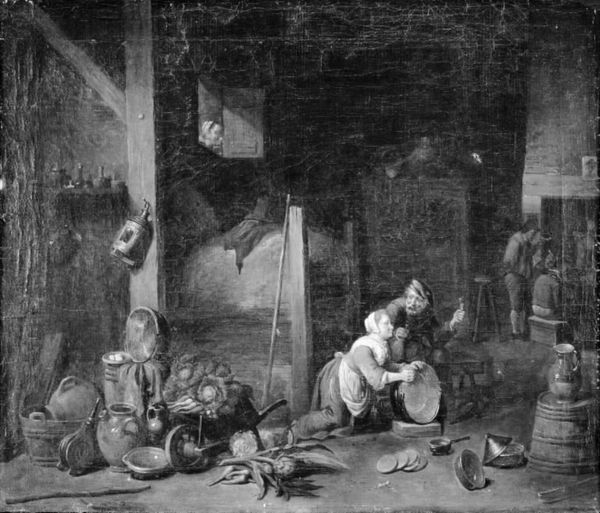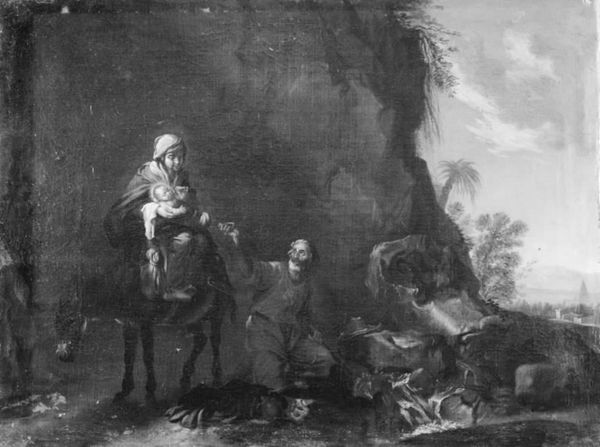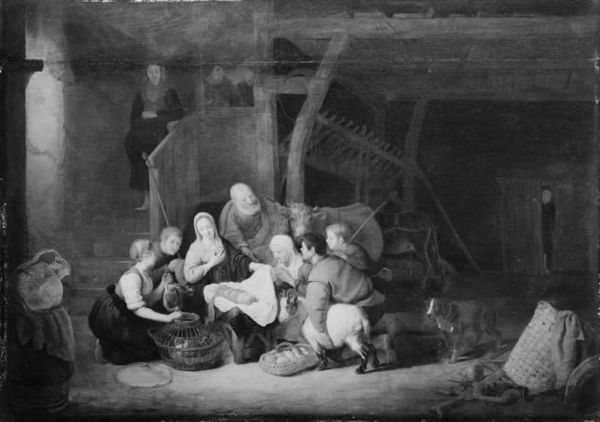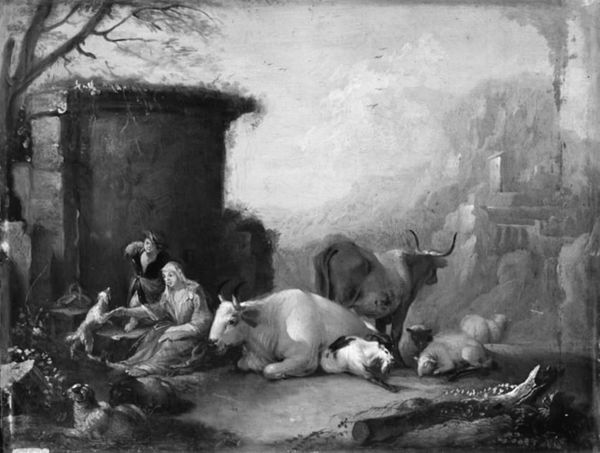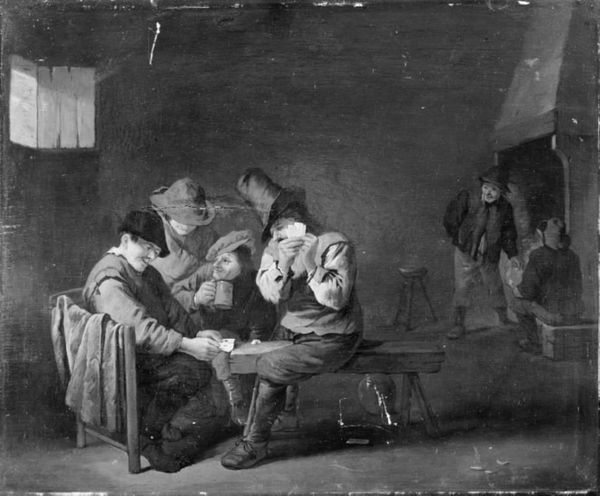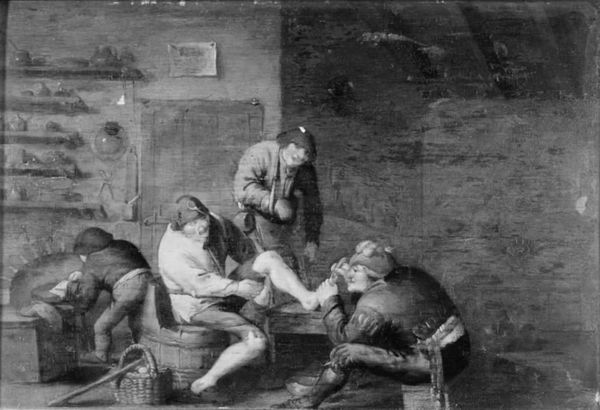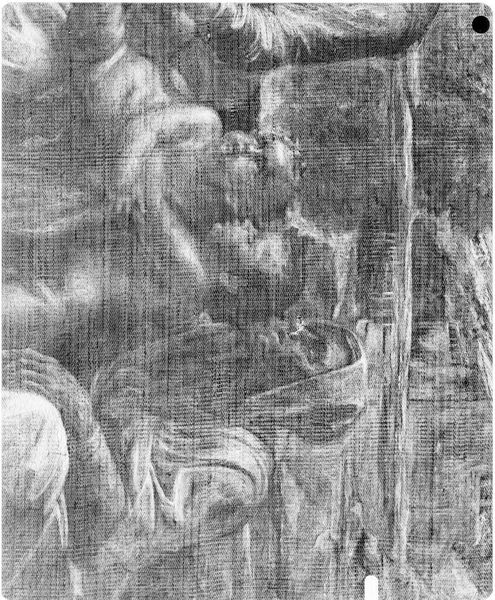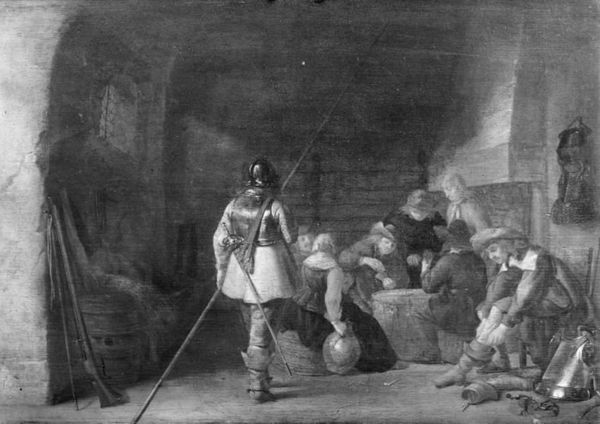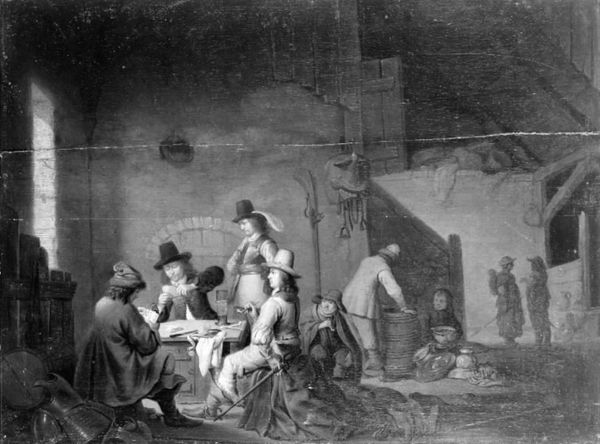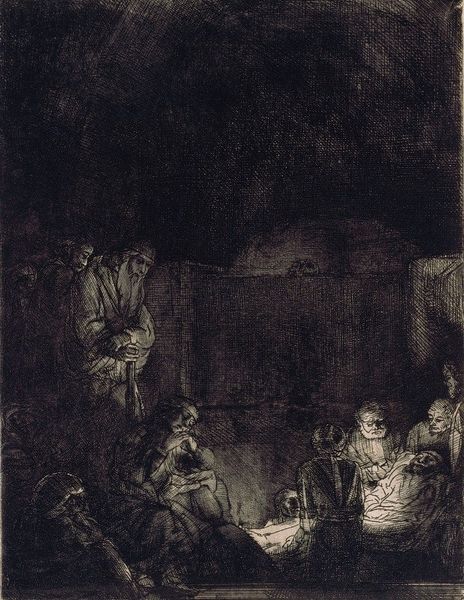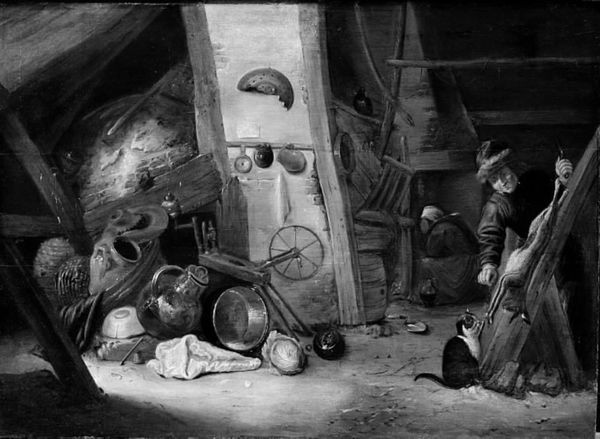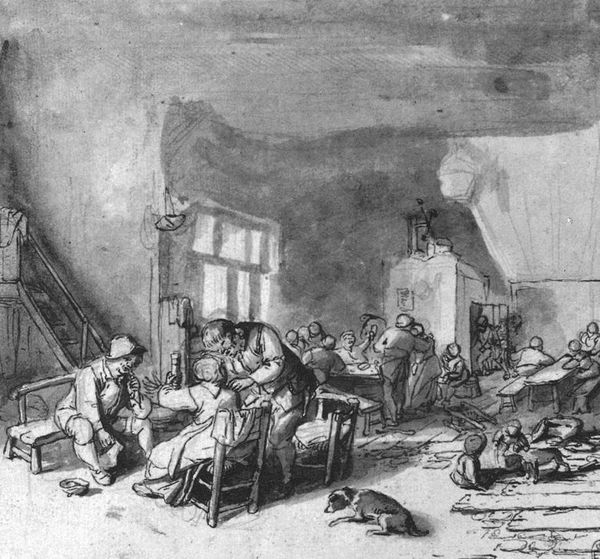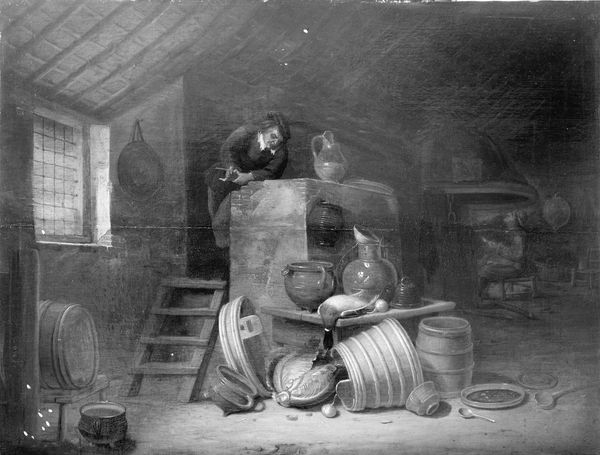
painting
#
dutch-golden-age
#
painting
#
charcoal drawing
#
genre-painting
#
monochrome
#
charcoal
#
realism
#
monochrome
Dimensions: 30.5 cm (height) x 39 cm (width) (Netto)
Curator: Here we have "A Kitchen Maid at Work" from 1634, a genre painting rendered by Herman Saftleven. Editor: It's overwhelmingly somber at first glance. The use of monochrome imbues it with a feeling of solemnity, almost as if observing a sacred ritual rather than daily labor. Curator: Indeed, Saftleven, though rooted in realism, presents more than mere depiction. The near-monochrome, perhaps executed primarily in charcoal, acts as a powerful unifier. Baskets, pots, figures; they all become facets of a unified symbolic scene. Note the kitchen maid herself. She seems isolated in the composition, which seems telling to me. Editor: Exactly, her isolation speaks volumes about the historical perception of women in domestic roles. I can’t help but feel there's a statement about class dynamics and the erasure of labor, too. We often see genre painting as innocuous depictions of everyday life, but this begs for a broader intersectional reading. The very absence of vibrant color underscores the marginalization of the domestic sphere and, by extension, those who inhabit it. Curator: I find the lack of distinct color enhances the viewer's focus on shapes, allowing an almost primal understanding of objects as symbols themselves. Even something as utilitarian as a basket speaks to notions of gathering, sustenance, perhaps even of cyclical labor. What do we gather? What are we sustaining? Are they cyclical conditions of the kitchen or those of the maid herself? These aren’t arbitrary shapes; they reflect a deeper communal visual lexicon. Editor: And that's precisely the strength of art— its capacity to ignite critical discussions. It allows us to consider what labor meant in that time, what dignity and respect, what lack thereof were attached to the job. It invites us to look critically at similar inequalities that still permeate contemporary work conditions, perhaps even unconsciously. Curator: An inequality seen through a historical and deeply archetypal lens. Seeing her today brings into sharper relief the invisible infrastructures that support contemporary life. Editor: Absolutely. It prompts us to reconsider and renegotiate these systems towards something equitable. I hope that the visitors have a fruitful moment considering this work.
Comments
No comments
Be the first to comment and join the conversation on the ultimate creative platform.
